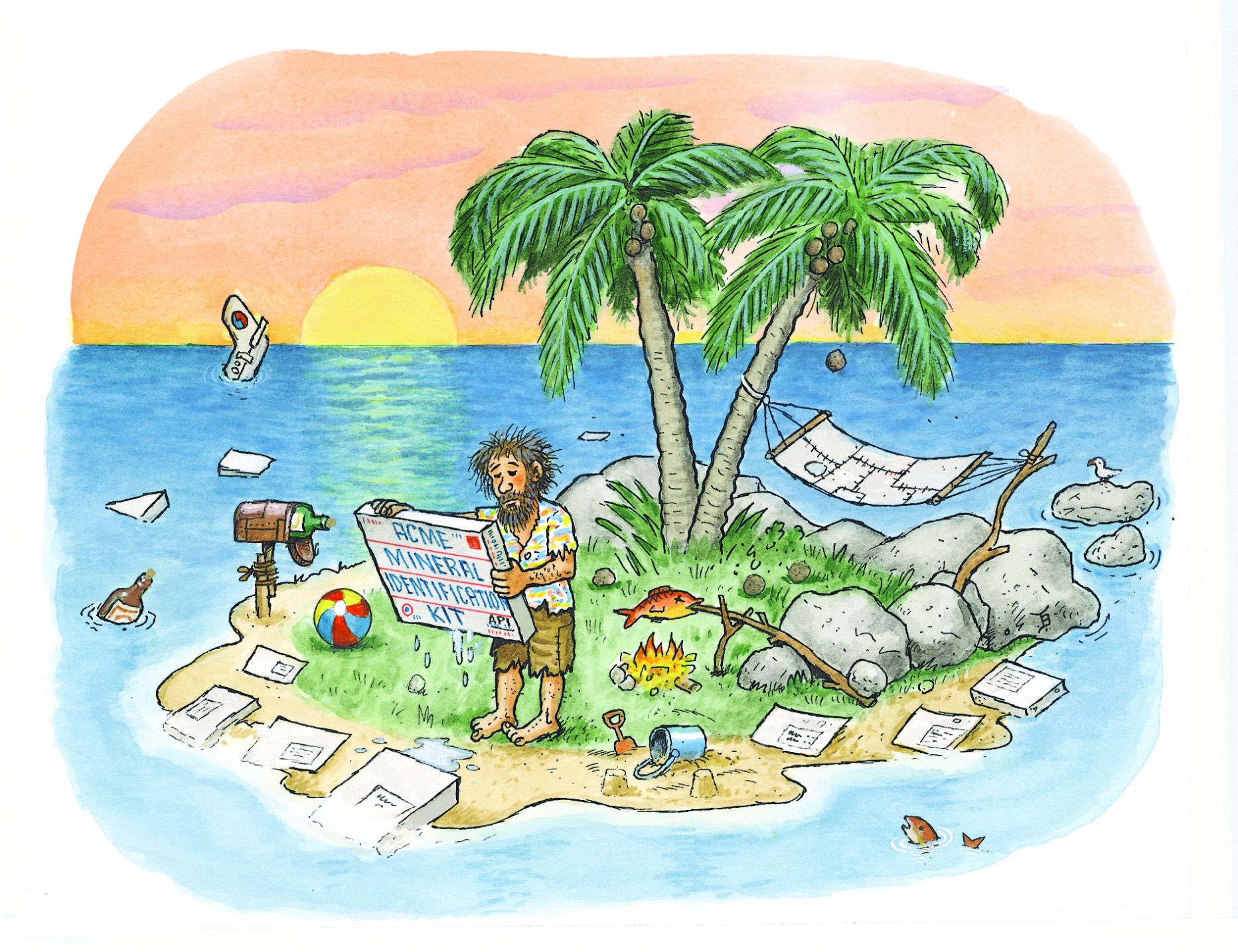
Overview
In this section you will find materials that support the implementation of EarthComm, Section 6: Earth's Mineral Resources.
Learning Outcomes
- Analyze and interpret data on a map to explain the distribution of several mineral resource commodities across the United States.
- Use a model to demonstrate techniques for exploring and locating ore deposits.
Inquiring Further
- To learn more about the Hall process, visit the following web sites:
Energy Needed to Produce Aluminum, U.S. Energy Information Administration
Describes the technologies and processes used to produce aluminum from aluminum ore.
Paul Héroult and Charles M. Hall, Chemical Heritage Foundation
Looks at the role that Paul Héroult and Charles M. Hall played in making aluminum commercially available.
Aluminum, The Essential Chemical Industry
Aluminum production, including the role that Charles Martin Hall played in the manufacture of aluminum.
- To learn more about mineral supply and demand, visit the following web sites:
Monitoring Cyclical Changes in U.S. Metals Activity, USGS
Explains how fluctuations in the economy can affect the metals activity of the U.S.
Mineral Commodity Summaries, USGS
Click on the year and mineral commodity of interest to learn about the worldwide supply and demand of that resource.
Metal Industry Indicators, USGS
Online monthly newsletter that analyzes and forecasts the economic health of five metal industries: primary metals, steel, copper, primary aluminum, and aluminum mill products.
- To learn more about mineral deposits and survey maps , visit the following web sites:
Providing Comprehensive Earth Science for Complex Societal Issues, USGS
Explains the approaches and information scientists consider when explaining natural phenomena. Includes a section on mineral deposit studies and mineral and energy resource studies.
Geologic Science of Alaska, USGS, Alaska Science Center
Describes the work of mineral-resource scientists and how they provide information about mineral assessments.
Resources
To learn more about this topic, visit the following web sites:
Mineral Resources on Earth
Volcanic Minerals, Volcano World
Contains information and images pertaining to volcanic mineral deposits, including bauxite (aluminum), diamonds, gold, nickel, and more.
Introduction to Volcanic Environments, AZO Mining
Discusses the formation of metallic mineral deposits during volcanic activity.
Potential for New Nickel-Copper Sulfide Deposits in the Lake Superior Region, USGS
Reviews how Ni-Cu deposits are formed, why they are important, and how scientists are evaluating the potential usefulness of the deposits in the Lake Superior Region.
The 1996 Estimate of Undiscovered Gold, Silver, Copper, Lead, and Zinc Remaining in the United States, USGS
Provides estimates of remaining deposits that contain gold, silver, copper, lead, or zinc.
Minerals America's Strength, National Mining Association
Interesting facts about minerals and mining in the United States.
Minerals - Commodity Statistics and Information, USGS
Click on the mineral commodity of interest to learn more about its use and recovery.
Mapping
Introduction to Geologic Mapping, USGS
Examines the methods for creating geologic maps and the data they represent.
Geologic Maps, USGS
Overview of what geologic maps are and why they are important to geologists. Also gives a brief introduction to the National Cooperative Geologic Mapping Program.
Remote Sensing in the USGS Mineral Resource Surveys Program in the Eastern United States, USGS
Uses a case study to illustrate how the modern techniques of remote sensing (aerial images) are helping geologists to locate potential mineral deposits.
Geochemistry
Carolina Slate Belt Gold Deposits in Virginia, North Carolina, South Carolina, and Georgia, USGS
Presents the steps that geoscientists follow to assess mineral deposits.
Stable Isotopes and Mineral Resource Investigations in the United States, USGS
Explains how analyses of the elements oxygen, hydrogen, sulfur, and carbon can be used to help in locating copper, lead, and zinc, gold, and silver deposits. Presents case studies in the eastern U.S.
Geophysics
Western Mineral and Environmental Resources, USGS
Provides bedrock and surficial surveys, geophysical research, and mineral resource studies that are ongoing in the Western U.S. Includes color samples of maps.
